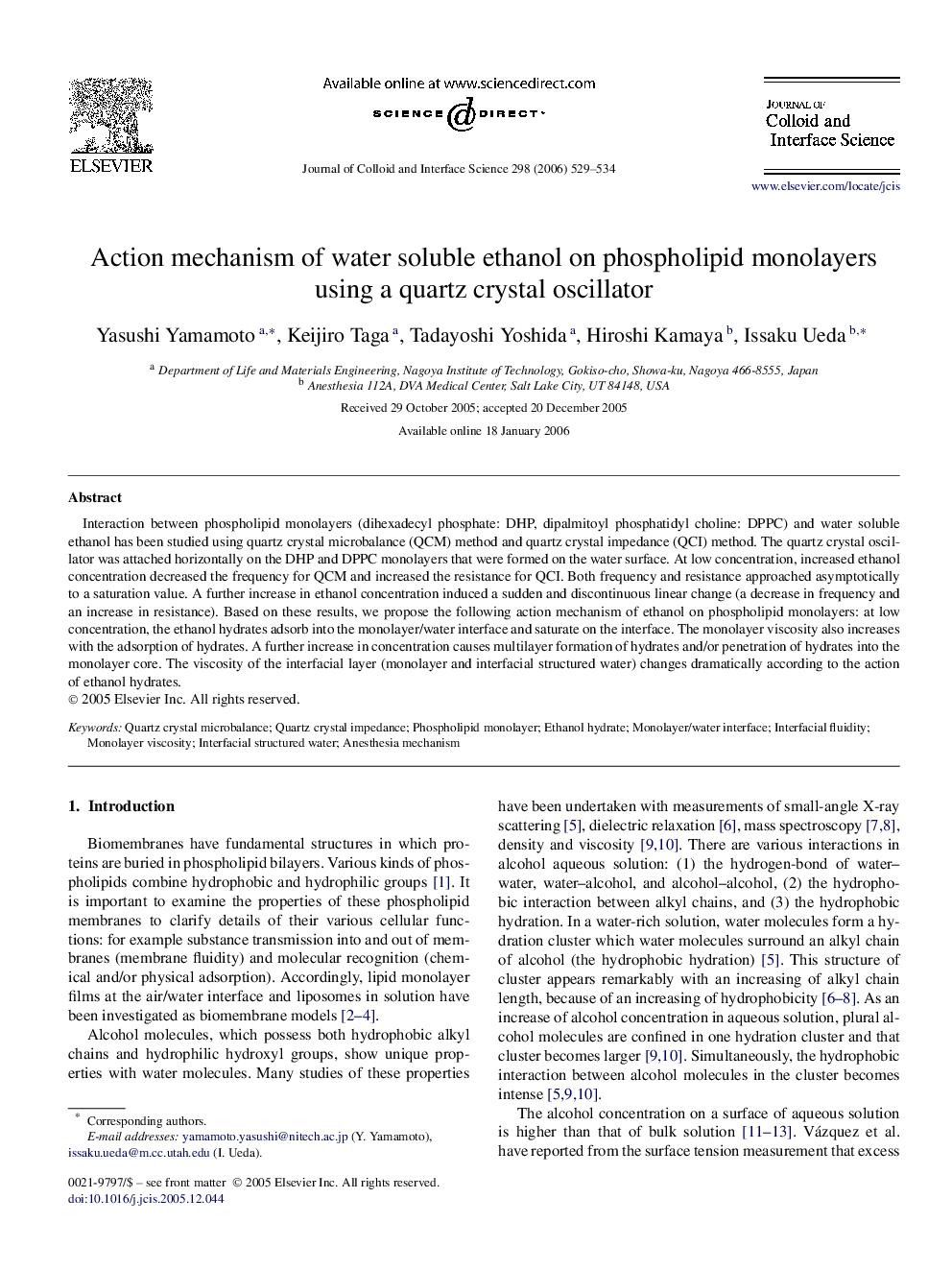| Article ID | Journal | Published Year | Pages | File Type |
|---|---|---|---|---|
| 613665 | Journal of Colloid and Interface Science | 2006 | 6 Pages |
Interaction between phospholipid monolayers (dihexadecyl phosphate: DHP, dipalmitoyl phosphatidyl choline: DPPC) and water soluble ethanol has been studied using quartz crystal microbalance (QCM) method and quartz crystal impedance (QCI) method. The quartz crystal oscillator was attached horizontally on the DHP and DPPC monolayers that were formed on the water surface. At low concentration, increased ethanol concentration decreased the frequency for QCM and increased the resistance for QCI. Both frequency and resistance approached asymptotically to a saturation value. A further increase in ethanol concentration induced a sudden and discontinuous linear change (a decrease in frequency and an increase in resistance). Based on these results, we propose the following action mechanism of ethanol on phospholipid monolayers: at low concentration, the ethanol hydrates adsorb into the monolayer/water interface and saturate on the interface. The monolayer viscosity also increases with the adsorption of hydrates. A further increase in concentration causes multilayer formation of hydrates and/or penetration of hydrates into the monolayer core. The viscosity of the interfacial layer (monolayer and interfacial structured water) changes dramatically according to the action of ethanol hydrates.
Graphical abstractEthanol-concentration dependent behavior of resistance (ΔR) for quartz crystal oscillator in contact with two monolayers after adding various ethanol concentrations. Circle: DHP, diamond: DPPC.Figure optionsDownload full-size imageDownload as PowerPoint slide
